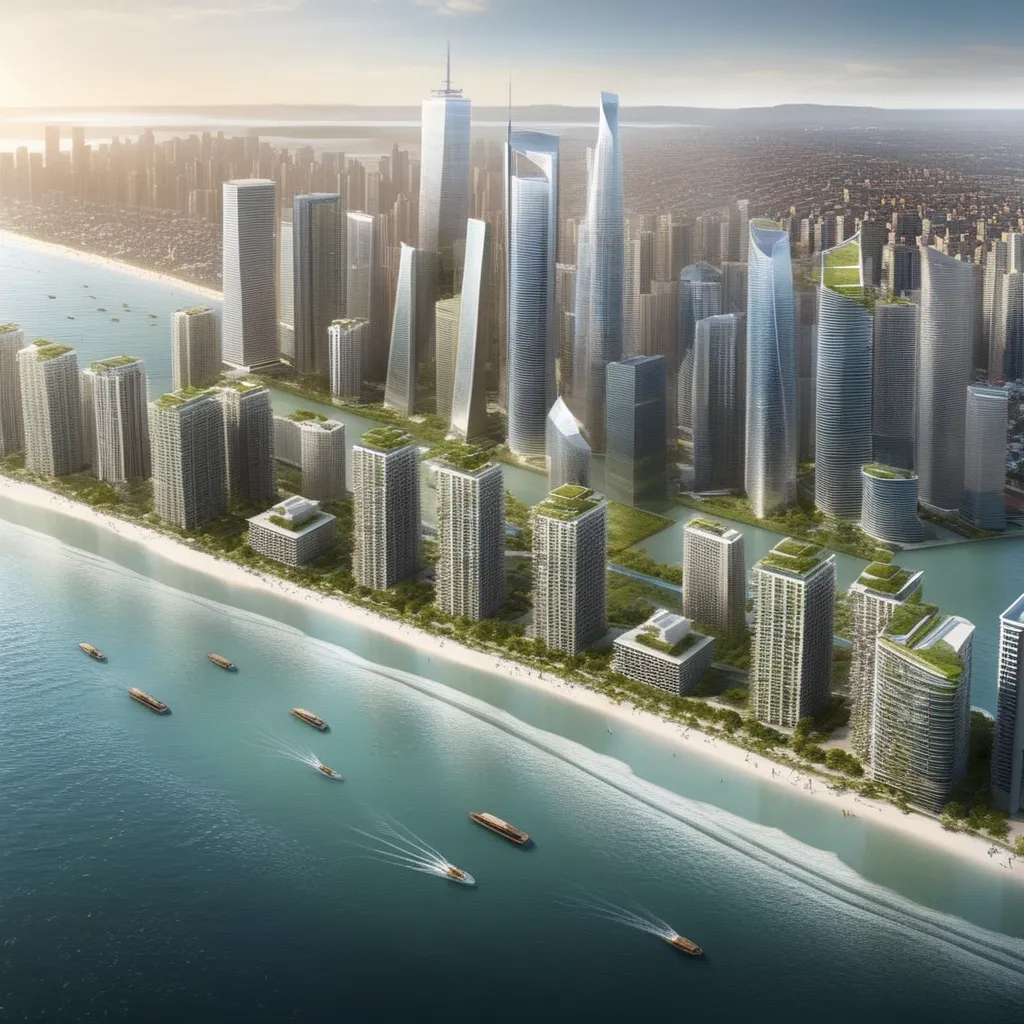Revolution in Urban Design: Cities Adapt to Rising Seas
The world's urban landscapes are changing, and it's not just because of architectural trends or urban sprawl. Cities are facing an unprecedented challenge—rising sea levels due to climate change. But here's the exciting part: a revolution in urban design is underway as cities adapt and innovate to confront the threat of encroaching waters.

A Personal Awakening
My journey into understanding the impact of rising sea levels on cities began with a visit to a coastal metropolis. As I strolled along the waterfront, I noticed something striking—walls and barriers designed to keep the sea at bay. It made me wonder about the challenges urban planners and designers face in addressing this imminent issue.
The Rising Threat
Climate change has led to rising sea levels, primarily driven by the melting of polar ice caps and the expansion of seawater as it warms. Coastal cities, home to millions, are on the front lines of this crisis, with increased risks of flooding, storm surges, and coastal erosion.
A Personal Encounter with Flooding
I remember a news report about a coastal city hit by an extreme storm surge. The images of flooded streets and stranded residents were a stark reminder of the vulnerability of coastal communities.
Embracing Resilience
In response to these challenges, cities around the world are rethinking their approach to urban design. They are embracing resilience as a core principle, with innovative strategies to adapt to rising seas.
Green Infrastructure
One notable trend is the integration of green infrastructure into urban areas. Green roofs, permeable pavements, and urban parks are being designed to absorb excess rainwater and provide natural buffers against flooding.
My Visit to a Flood-Resilient Park
I had the opportunity to visit a flood-resilient park in a coastal city. During heavy rains, the park's design allowed excess water to flow into purpose-built retention ponds, preventing nearby neighborhoods from flooding. It was a shining example of nature-based solutions in action.
Floating Architecture
Some cities are taking inspiration from Venice and Amsterdam by exploring the concept of floating architecture. Floating homes, buildings, and even entire neighborhoods are being designed to adapt to rising water levels.
A Glimpse of the Future
While traveling, I came across a community of floating houses in a coastal city. These homes were built on platforms that could rise with the tides. It was like something out of a science fiction novel, yet it showcased a practical solution for living with rising seas.
Coastal Managed Retreat
In particularly vulnerable areas, cities are considering managed retreat—a strategy that involves relocating structures and infrastructure away from the coast. It's a challenging but necessary approach to ensure long-term resilience.
Witnessing Managed Retreat
I visited a coastal town that had implemented a managed retreat plan. The town had moved some of its public facilities further inland while allowing certain low-lying areas to return to their natural state. It was a bold move that aimed to protect the town's future.
Community Engagement
Crucially, communities are being engaged in the design and planning process. Residents are participating in decisions about protective measures, and their local knowledge is invaluable in crafting effective solutions.
A Lesson in Community Resilience
I spoke with a community leader in a coastal neighborhood. They described how their community had come together to implement localized flood protection measures, emphasizing the power of community-driven resilience.
The Path Forward
The revolution in urban design driven by the challenge of rising seas is reshaping our cities for a more sustainable future. It's a testament to human adaptability and creativity in the face of adversity.
Your Role in Urban Resilience
Whether you live in a coastal city or far from the shore, you can play a role in promoting urban resilience. Supporting sustainable urban planning, advocating for climate action, and raising awareness about the impacts of rising seas are steps we can all take.
In conclusion, as cities adapt to rising seas, we witness a revolution in urban design that promises to create more resilient, sustainable, and innovative urban environments. It's a journey that underscores the importance of addressing climate change and preparing for the challenges of the future.

No comments:
Post a Comment